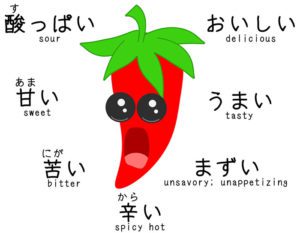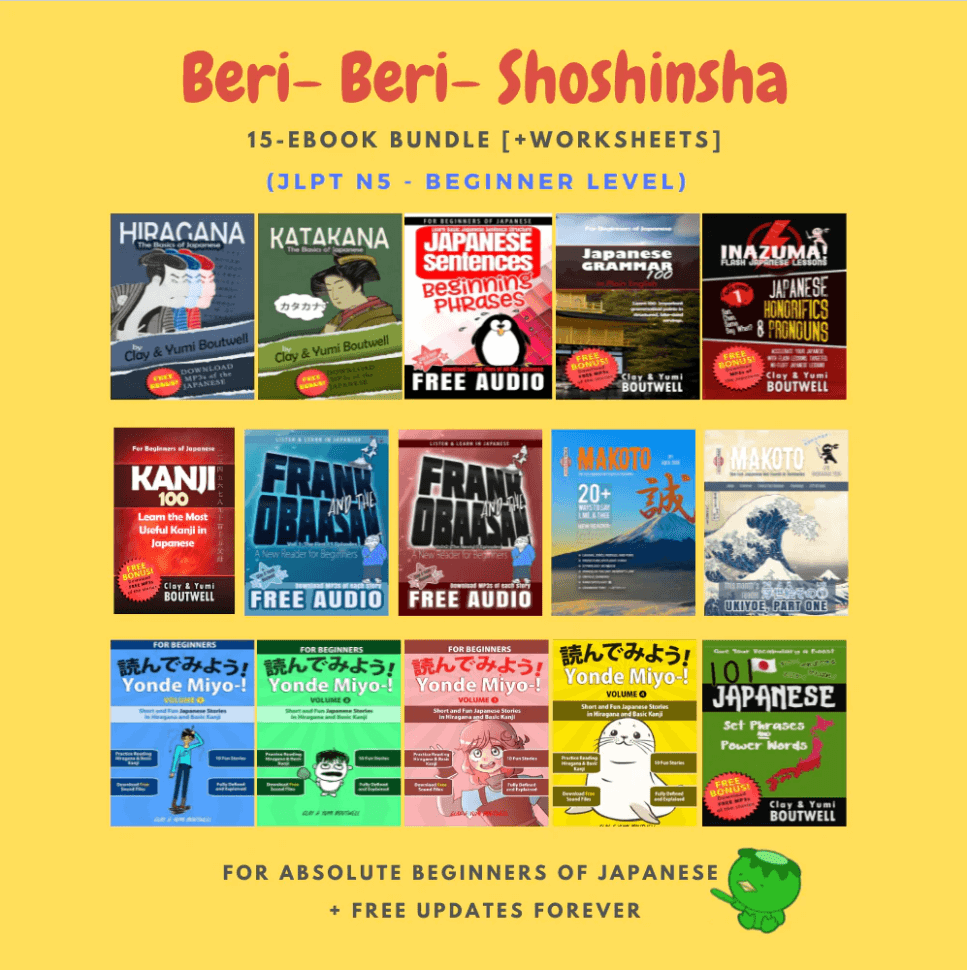How do you say sweet, sour, or spicy in Japanese? Let's take a look at a few tastes words.
酸っぱい suppai—sour
そのパイナップルは、酸っぱくて食べられなかった。
That pineapple was so sour, I couldn't eat it.
[su_spoiler title=”Vocabulary and Grammatical Notes” open=”no” style=”fancy” icon=”arrow”]
その sono–that
パイナップル painappuru–pineapple
は wa–(topic particle)
酸っぱくて suppakute–sour and… [from 酸っぱい suppai–sour; this is the て form which acts as a conjunction. It is sour and (therefore) I cannot eat it.]
食べられなかった taberarenakatta–unable to eat [from 食べる taberu–to eat]
[/su_spoiler]
甘い amai—sweet
食後に何か、甘いものが食べたい。
After the meal, I want something sweet to eat.
[su_spoiler title=”Vocabulary and Grammatical Notes” open=”no” style=”fancy” icon=”arrow”]
食後に shokugo ni—after eating
何か nanika–something
甘いもの amai mono—sweets; something sweet
が ga—marks the object wanted to be eaten
食べたい tabetai—to want to eat [~たい means “want to”]
[/su_spoiler]
Here is an idiomatic use of あまい similar to how it is used in English.
彼は、甘い言葉で彼女を誘った。
He seduced her with sweet words.
[su_spoiler title=”Vocabulary and Grammatical Notes” open=”no” style=”fancy” icon=”arrow”]
彼 kare—he
は wa—(topic particle)
甘い言葉 amai kotoba—alluring words; sugared words; flattery
で de—with
彼女 kanojo—she; her [can also mean “girlfriend”]
を o—(direct object marker)
誘った sasotta—tempted; seduced
[/su_spoiler]
い nigai—bitter
薬は、苦いほうが効く。
Bitter medicine works better.
[su_spoiler title=”Vocabulary and Grammatical Notes” open=”no” style=”fancy” icon=”arrow”]
薬 kusuri—medicine
は wa—(topic particle)
苦い nigai—bitter
ほうが houga—is more than; is better; (bitter is more effective)
効く kiku—works; has effect
[/su_spoiler]
彼は、苦い経験を乗り越えて、大人になった。
He overcame a bitter experience and became an adult.
[su_spoiler title=”Vocabulary and Grammatical Notes” open=”no” style=”fancy” icon=”arrow”]
彼 kare—he
苦い経験 nigai keiken—a bitter experience
乗り越えて nori koete–overcame
大人 otona—adult
になった ni natta—became
[/su_spoiler]
い karai—spicy hot
インドのカレーは、辛い。
Indian curry is spicy.
[su_spoiler title=”Vocabulary and Grammatical Notes” open=”no” style=”fancy” icon=”arrow”]
インド indo—India
カレー kare– – curry
インドのカレー indo no kare– – Indian curry
辛い karai–spicy
[/su_spoiler]
おいしい oishii—delicious
日本の食事は、おいしい。
Japanese food is delicious.
[su_spoiler title=”Vocabulary and Grammatical Notes” open=”no” style=”fancy” icon=”arrow”]
日本 nihon—Japan
食事 shokuji—food
日本の食事 nihon no shokuji—Japanese food
おいしい oishii—delicious
[/su_spoiler]
うまい umai—tasty
この店のすしは、うまい。
This restaurant's sushi is tasty.
[su_spoiler title=”Vocabulary and Grammatical Notes” open=”no” style=”fancy” icon=”arrow”]
この kono—this [used before nouns]
店 mise—store
すし sushi—sushi
この店のすし kono mise no sushi—this restaurant’s sushi
うまい umai—delicious; tasty
[/su_spoiler]
And here is another idiomatic use for うまい.
うまい話には、気を付けたほうがいい。
[su_spoiler title=”Vocabulary and Grammatical Notes” open=”no” style=”fancy” icon=”arrow”]
うまい話 umai hanashi—too-good-to-be-true stories (scams; frauds)
には ni wa—as for (too-good-to-be-true stories)
気を付けた ki o tsuketa—take care [use the た form of verbs before ほうがいい]
ほうがいい hou ga ii—better to
[/su_spoiler]
まずい mazui—unsavory; not delicious
このラーメンは、まずい。
This ramen is horrible.
[su_spoiler title=”Vocabulary and Grammatical Notes” open=”no” style=”fancy” icon=”arrow”]
この kono—this (goes before a noun)
ラーメン ra-men—ramen noodles
まずい mazui—not delicious
[/su_spoiler]
Like うまい, まずい can be used idiomatically also.
これは、まずいことになった。
This is a raw deal.
[su_spoiler title=”Vocabulary and Grammatical Notes” open=”no” style=”fancy” icon=”arrow”]
これは kore wa—as for this, it is…
まずいこと mazui koto—a bad thing
になった ni natta—became
[/su_spoiler]






